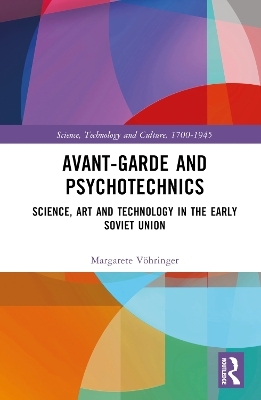
Avant-Garde and Psychotechnics
Routledge (Verlag)
978-1-032-53264-6 (ISBN)
Avant-Garde and Psychotechnics presents an innovative look at the Russian avant-garde and its cultural encounters with the sciences in the 1920s. The book examines some of the lesser known entanglements between architects, filmmakers and philosophers, on the one hand, and experimental psychologists and physiologists on the other. In Russia, famous avant-garde artists, such as El Lissitzky, Vassily Kandinsky and Dziga Vertov, helped propagate a movement referred to as "psychotechnics" that was emerging at the time in Germany and the United States and eventually led to a "psychotechnical boom." At the end of the story told in the book, it becomes clear that this boom continues to the present day. By analyzing concrete projects undertaken by Russian artists and scientists in cooperation with one another, and by drawing on as-yet-unpublished archival material, Avant-Garde and Psychotechnics challenges the established notion of socialist sciences. At the same time, it provides an entirely new picture of what was thought to be modern art, thereby demonstrating that artistic experimentation had much more than a mere metaphorical meaning in Russian arts in the 1920s.
In 2007 Avant-Garde and Psychotechnics was acknowledged with an award for interdisciplinary research by the Wilhelm-Ostwald-Society, Großbothen. In 2011 the book received funding from the VolkswagenStiftung to be translated into English and Russian (the Russian edition was published by NLO books in 2019). The original German edition also received favorable reviews in NZZ, NTM, Derive, Junge Welt and Sehepunkte.
Margarete Vöhringer is currently Professor for the Materiality of Knowledge at Georg-August-University Göttingen. Her research interests include materiality and aesthetics of the sciences, connections between art and science, history of collecting and exhibiting, Russian avant-garde, and cultural techniques of seeing. She has co-edited several anthologies: Sehstörungen. Grenzwerte des Visuellen in Künsten und Wissenschaften (with Anne Kathrin Reulecke, Berlin 2019); Wissenschaft im Museum – Ausstellung im Labor (with Anke Te Heesen, Berlin 2014) and Phantome im Labor: Die Verbreitung der Reflexe in Hirnforschung, Kunst und Technik. Berichte zur Wissenschaftsgeschichte 32(1), 2009 (with Yvonne Wübben).
Introduction. 1. Feed(ing) Back: Nicolai Ladovsky’s Psychotechnical Laboratory for Architecture, Moscow 1921–1927 2. Networking: Vsevolod Pudovkin's Mechanics of the Brain – Film as Reflexology, Leningrad/Moscow 1925–1926. 3. Grafting: Alexander Bogdanov's Circular Blood Transfusions, Moscow 1924–1928. Conclusion: Feeding Back, Networking and Grafting as Cultural Techniques.
| Erscheinungsdatum | 02.08.2023 |
|---|---|
| Reihe/Serie | Science, Technology and Culture, 1700-1945 |
| Zusatzinfo | 50 Halftones, black and white; 50 Illustrations, black and white |
| Verlagsort | London |
| Sprache | englisch |
| Maße | 156 x 234 mm |
| Gewicht | 496 g |
| Themenwelt | Kunst / Musik / Theater ► Kunstgeschichte / Kunststile |
| Naturwissenschaften ► Geowissenschaften ► Geografie / Kartografie | |
| Sozialwissenschaften ► Soziologie ► Spezielle Soziologien | |
| ISBN-10 | 1-032-53264-5 / 1032532645 |
| ISBN-13 | 978-1-032-53264-6 / 9781032532646 |
| Zustand | Neuware |
| Informationen gemäß Produktsicherheitsverordnung (GPSR) | |
| Haben Sie eine Frage zum Produkt? |
aus dem Bereich


